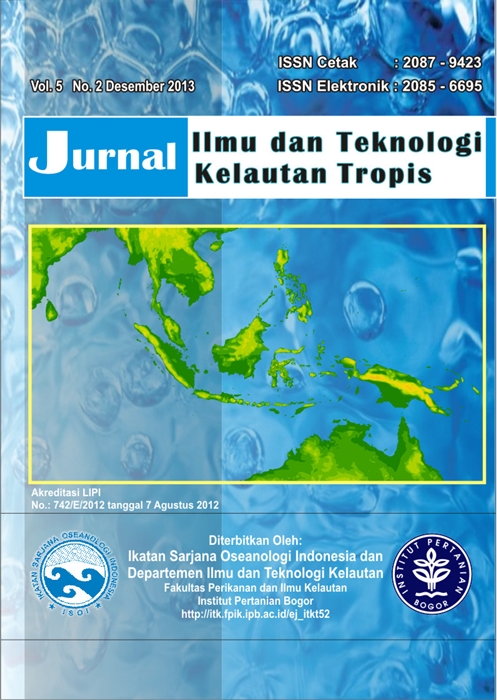FLUORESCENT LAMP LIGHT INTENSITY ON THE EMBRYOGENESIS DEVELOPMENT AND THE SURVIVAL OF PEARL OYSTER (Pinctada maxima) LARVAE
Abstract
One of the important factors in determining the success of pearl oyster (Pinctada maxima) culture is the quality and quantity of larvae produced in brood stock spawning process in the laboratory. Problems were often found in larval rearing and larvae attachment to the substrate that were low in quality and little number of larvae. The study purposes were observe the embryogenesis development and the survival rate of pearl oyster larvae under different fluorescent lamp light intensities. The study was conducted in August 1nd – 30th, 2011 in Sambelia Bumi Gemilang Hamparan Mutiara laboratory, East Lombok. Results revealed that different in light intensities effected the survivorship of the pearl oyster larvae significantly (p<0.01). Honest Significant Difference (HSD) test indicated that the highest survival rate occurred in dark condition (dark treatment) of 38%, followed by intensity of 10 watts (34.67%), 5 watts (30.67%) and 15 watts (4.66%) resfectively
Keywords: embryogenesis development, survivorship, pearl oyster (Pinctada maxima) larvae, fluorescent lamp light intensity
Authors
This work is licensed under a Creative Commons Attribution 4.0 International License.
Jurnal Ilmu dan Teknologi Kelautan Tropis i is an open-access journal, meaning that all content is freely available without charge to the user or their institution. Users are allowed to read, download, copy, distribute, print, search, or link to the full texts of the articles in this journal without needing to request prior permission from the publisher or the author.
All articles published by Jurnal Ilmu dan Teknologi Kelautan Tropis are licensed under the Creative Commons Attribution 4.0 International License. This allows for unrestricted use, distribution, and reproduction in any medium, provided proper credit is given to the original authors.
Authors submitting manuscripts should understand and agree that the copyright of published manuscripts is retained by the authors. Copyright encompasses the exclusive rights of authors to reproduce, distribute, and sell any part of the journal articles in all forms and media. Reproduction of any part of this journal, its storage in databases, and its transmission by any form or media is allowed without written permission from Jurnal Ilmu dan Teknologi Kelautan Tropis.


